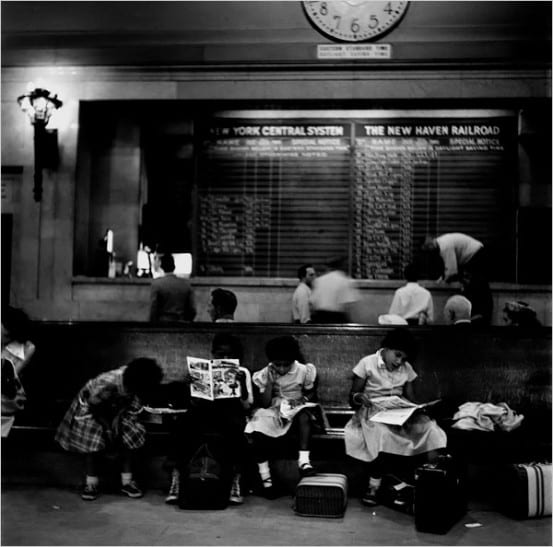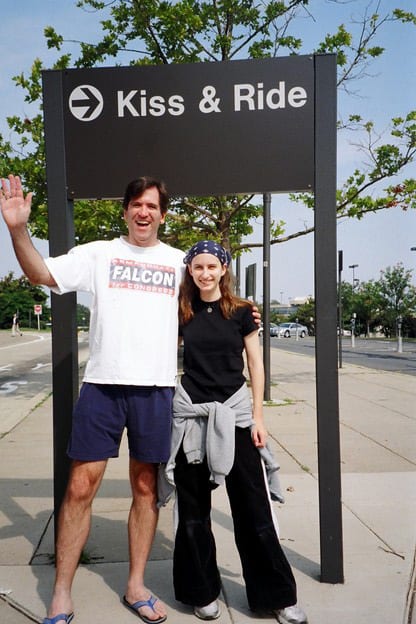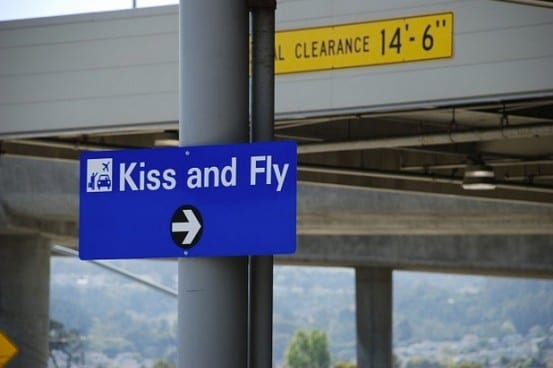Just a few months ago, Metro-North released plans for changes in Grand Central Terminal’s Biltmore Room – a room that has an amusing nickname – the Kissing Gallery. Of course the media couldn’t resist reporting on what they called the “kissing room,” and thus it found its way into most people’s awareness for the first time. As times have changed significantly over the past one hundred years, the room’s original purpose, and even the social niceties warranting the room in the first place, are rather different. Nonetheless, I think the story of the Kissing Gallery is an interesting bit of Grand Central history, and highlights one of the original concepts that made the Terminal great.
In March of 1912, just less than a year the before the opening of Grand Central Terminal, the New York Central’s chief engineer George W. Kittredge announced that the Terminal would have a designated “Kissing Gallery.” There was likely much jest in the dialogue, as Kittredge also called the entrance to the room the “perfunctory peck spot” – though he was said to prefer the term “greeting gallery.” Other folks named it the “Romeo and Juliet room” – no matter what it was called, the room (rumored to be built with soundproof walls and roof) had an important purpose in the Terminal.

The Biltmore Room in the 1950’s. Photo by Boris Klapwald.
Nowadays, heading through Grand Central Terminal is a bit chaotic. People run through the main concourse en route to the subways, the passageways, or any of the various exits. Grand Central was not always like this, however. One of the wonderful things about the Terminal when it was first built was that everything was highly organized. It was acknowledged that a variety of people would be using the station – commuters, long-distance riders, arriving passengers, and even those who were not going to take a train. The goal was to keep each audience separate – if they never mixed, there would never be a “traffic jam.”
Commuters dwelled in Grand Central’s lower concourse, and as they made their way out to either the subway or the street, they traveled up the ramps, never having to enter the main concourse. Long distance departures left from the gates in the main concourse, where a passenger could see all of the tracks in one glance, and quickly find their train. Incoming long-distance trains arrived in the Biltmore Room – and it was here where the Kissing Gallery was found.
The Biltmore Room was named for the Biltmore Hotel, located above and accessible via this room. The idea was that arriving passengers could ascend directly to their hotel without ever having to step outside, and as an added amenity bags would be taken directly from your train right up to your room. As the designated greeting room, kissing was permitted here – as long as it abided by several rules…
Rules on Kissing – Grand Central Terminal
Rules regarding kissing will be enforced by GCT staff
No kiss shall last longer than 5 seconds
Keep your tongue in your own mouth
The attendants will have orders to stop all osculation and send the particpants to the Romeo and Juliet room. No soul kisses… only straight ‘goodby’ and ‘how-are-you’ greetings of less than five seconds duration.
No kissing in any part of the Terminal other than the Kissing Gallery
Those who meet by chance in other parts of the station than the “kissing gallery” will be under the watchful eye of attendants who at the first sign of an affectionate embrace will politely request that the kiss parlors are the proper place for that sort of thing.
Please abide by the above rules
The purpose of the [room] is to do away with this promiscuous kissing around the station, and centralize it.
In all seriousness, the one main reason that these rules were in place was to deal with the aforementioned “traffic jams” that Grand Central was designed to avoid. In the main concourse passengers were supposed to have the ability to see every gate from anywhere in the room and know from exactly which spot their train would leave. Groups of stationary couples showing public displays of affection would not only hinder movement, but block the line of sight. Not to mention that this was 1913, and people were certainly more reserved. I suppose in a place where every single detail was well thought out, having a designated kissing area doesn’t sound too abnormal.


Left: Me about 10 years ago with my friend’s uncle in front of a DC Metro Kiss and Ride sign. Right: A Kiss and Fly sign at San Francisco International Airport. Photo from JPG Magazine.
I think the interesting thing to note is that there are still train stations in the United States and beyond that have similar concepts. I was rather amused by the “Kiss and Rides” found at many DC Metro stations when I first rode the rails there. Some airports also have “Kiss and Fly” versions. Since Grand Central’s Kissing Gallery was located in the arrivals hall, there was more of a focus on people greeting someone special arriving by train. These Kiss and Ride, or Kiss and Fly areas seem more focused on passengers departing – giving them a kiss and letting them go on their way.
Today there are no long distance trains that leave Grand Central – service is strictly commuters – but in its heyday Grand Central carried many different groups of people. The train was really the only way anyone traveled long distance in the early 1900’s, and the railroad was integral for moving troops during the world wars. Thus I wonder how many “thank god you’re still alive after the war” kisses happened in the Biltmore Room. Another thought to ponder about the Terminal we all know and love.


Ha! We have the ability to kiss and ride in Germany as well :)
I took a (crappy) photo of such a sign at Cologne Central Station 5 years ago:
http://www.fahrbier.de/2007/09/kiss-ride.html
Would you allow me to borrow the kissing rules from your page to write about them in my blog – referring to my older entry ibidem?
Thanks and Happy Thanksgiving, btw…
Holger
Most definitely! I would totally link back to you too, if I could read German :)
““thank god you’re still alive after the warâ€
Something to think about; especially today.
Happy Thanksgiving.
I looked at the Washington Metro website to see whether kiss-and-ride areas are explained anyplace. I didn’t see anything on the Parking page, and a search of the whole site turned up 365 results, among them the Parking page, but the top results didn’t seem to tell people what a kiss-and-ride area is or how it works (basically, it’s a spot to drop off or pick up passengers, and vehicles are supposed to stop just momentarily, not park there). I live in Virginia and use Metro a lot, and I think that maybe people are just supposed to know what “kiss & ride” means. By the way, I used to live in the Northeast, and I’ve ridden Metro North a few times, and enjoy reading your blog and keeping up with what’s going on, and I’m enjoying the series on one of my favorite buildings, GCT. I saw Wreck-It Ralph over the weekend; it had, I think, “Game Central Station,” which was clearly patterned on GCT.
On a somewhat related topic, JFK (and other airports) have cellphone parking lots where you can wait (for free) until the person you’re waiting for gets to the pickup area and calls you. When I first saw the sign I thought it was a pretty good outside-the-box idea. There’s a short article about it here.
The Biltmore Room is still one of my favorite parts of GCT, even if it was looking a bit worn the last time I went over to take a look (I haven’t been on a train that arrived or departed from one of those tracks in years). As a kid I’d go through it all the time since the ‘upper’ Harlem off-peak diesels almost always arrived on those tracks so they could turn the train. At that time the room was full of bus station style lockers, hiding most of the architectural elements from view. Then in the mid-80s (I think) it was renovated, it seemed like the first area of the terminal to be touched, and I was amazed at how beautiful the room was after being cleaned and the lockers removed. It really made me hope that some day maybe other parts of the terminal could be returned to their historic grandeur.
What source did the rules for kissing come from?
The rules were printed in a newspaper when the Terminal opened. Can’t recall at this point since it has been many years, but it may have been the New York Times.